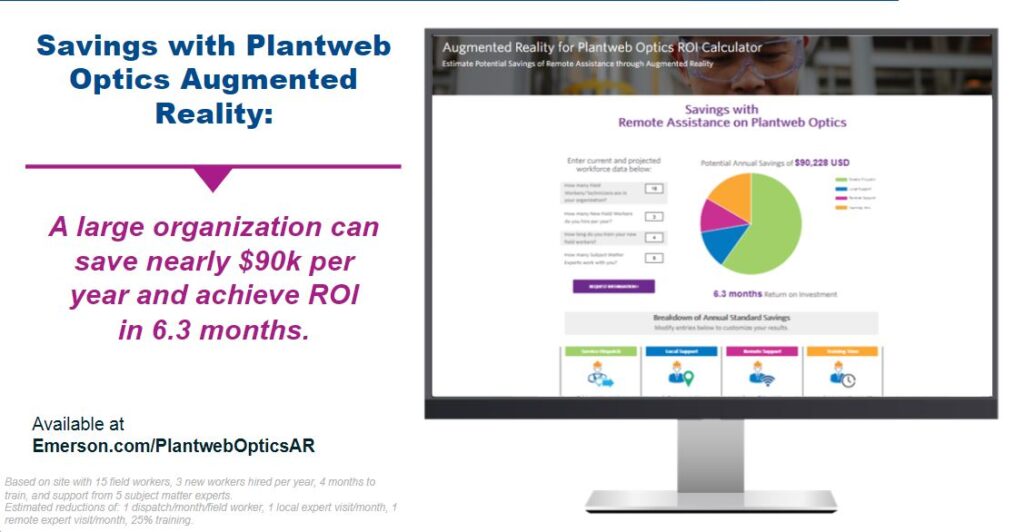Operational Performance and other essential factors in a production facility can be improved with Augmented Reality, Alessea Lane, and Peter Pan, Emerson’s engineers said last Tuesday during the Emerson’s Exchange Virtual Series.
As the pandemic has changed many operational practices that were relevant before, engaging in Augmented Reality (AR) can significantly improve technicians and engineers’ competencies on certain assets, with live remote assistance from senior technicians and with IoT data.
Such Augmented Reality interfaces allow technicians and operators to develop Situational Awareness via the deployment of data and insights on a certain tool or asset’s behavior, explained Alessea Lane and Peter Pan.


Such data, contextualized and structured, is available for technicians via mobile devices, enabling Operational Connectivity and Workflow integration. This ensures better decision-making and fewer risks for operators, as they are remotely assisted with this data.
“The Plantweb Optics solution improves availability and reliability by enhancing the visibility to the help of your assets; experts in your facility are always connected to the assets they care about most. All the data is sent to the operators in a personalized dashboard, improving corrective actions and overall operational performance”, said Lane.
A solution such as this is essential in a post-pandemic working environment, as plants and facilities have to keep production with reduced personnel. With Augmented Reality, inexperienced or young operators can improve their decision-making or be assisted in an alarming event.
Recommended to you: Digital transformation and technology acceleration due to COVID-19 – Emerson


Augmented Reality success stories
According to Lane, Augmented Reality has already served companies to achieve Top Quartile Performance even in post-pandemic conditions. “Waiting for someone to fly over and fix a certain asset just doesn’t work anymore,” she said.
Then, Peter Pan raised three different scenarios for Augmented Reality, summarized in three big questions: Where are my assets? What is the current status? How can I make my repairs? Each one of these represents Situational awareness, Relevant IoT data, and Remote assistance.
“With AR, you can locate the asset you are looking for with a 2D and 3D map. IoT data shows you what is happening with that asset, what’s wrong with it, and how it can be fixed. Finally, you can have remote assistance with an expert who’ll guide you step-by-step on the repair,” Peter Pan said.




After this, the Emerson engineer gave a demonstrative demo of the Plantweb Optics solution. He took out his phone, opened the app, and then a 3D map guided him to the asset he was looking for. A bright yellow line pointed at a pressure valve, and when he was near the valve, a dialogue globe popped up saying it had low pressure.
Peter Pan asked for remote assistance, and then an expert guided him through the repair. In all the process, AR was there, pointing at the correct valve to be fixed and showing data on the asset’s behavior.
Finally, the engineers shared two success stories about AR as an operational solution. One of them was a midstream company, with half of its senior technicians retired. The challenge was to train younger operators who had less than 5 years of experience. AR served them to accomplish that objective.


